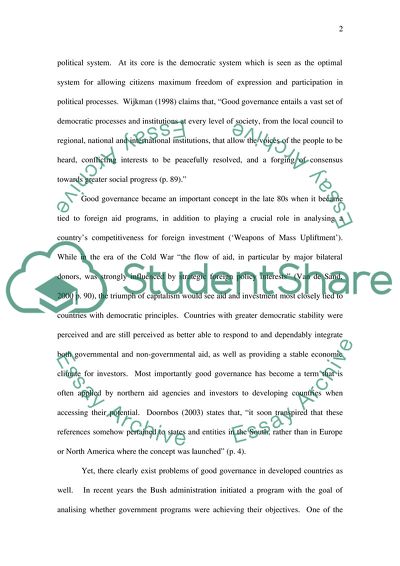Cite this document
(“Good Governance in Chile and Argentina Essay Example | Topics and Well Written Essays - 2000 words”, n.d.)
Retrieved from https://studentshare.org/social-science/1513616-assess-the-prospects-for-establishing-and-maintaining-good-governance-in-the-developing-world-use-case-study-material-on-either-2-countries-within-the-same-r
Retrieved from https://studentshare.org/social-science/1513616-assess-the-prospects-for-establishing-and-maintaining-good-governance-in-the-developing-world-use-case-study-material-on-either-2-countries-within-the-same-r
(Good Governance in Chile and Argentina Essay Example | Topics and Well Written Essays - 2000 Words)
https://studentshare.org/social-science/1513616-assess-the-prospects-for-establishing-and-maintaining-good-governance-in-the-developing-world-use-case-study-material-on-either-2-countries-within-the-same-r.
https://studentshare.org/social-science/1513616-assess-the-prospects-for-establishing-and-maintaining-good-governance-in-the-developing-world-use-case-study-material-on-either-2-countries-within-the-same-r.
“Good Governance in Chile and Argentina Essay Example | Topics and Well Written Essays - 2000 Words”, n.d. https://studentshare.org/social-science/1513616-assess-the-prospects-for-establishing-and-maintaining-good-governance-in-the-developing-world-use-case-study-material-on-either-2-countries-within-the-same-r.


